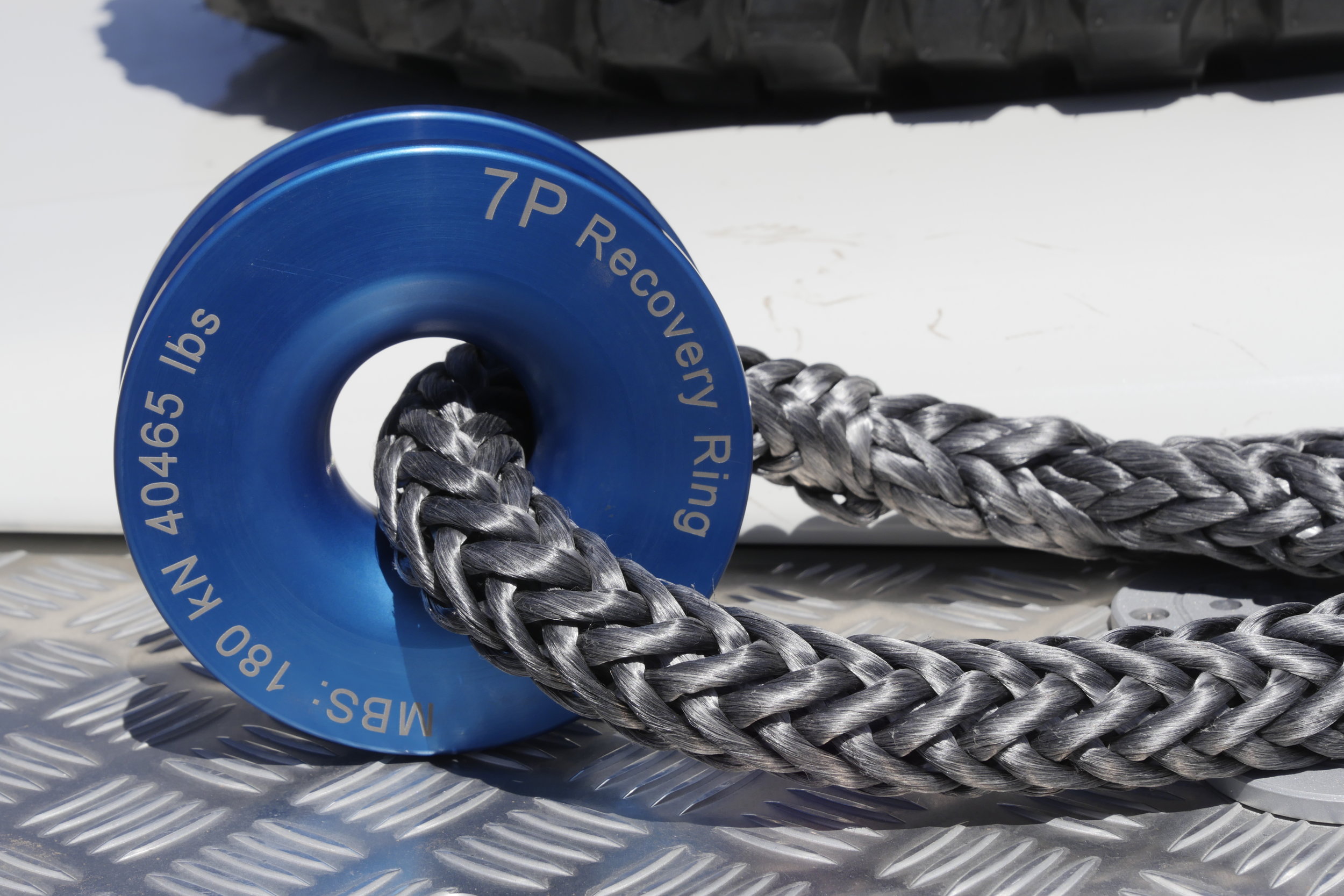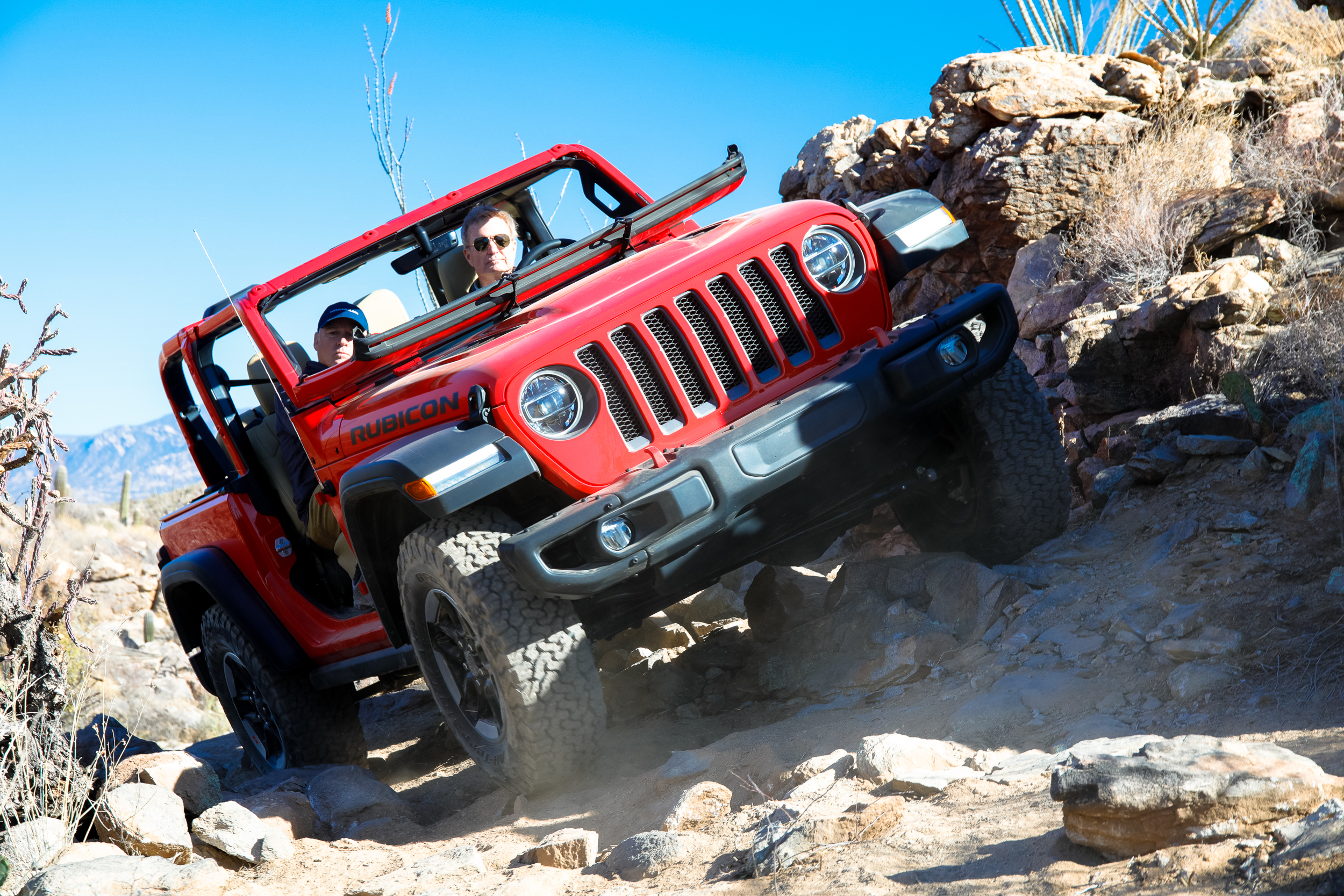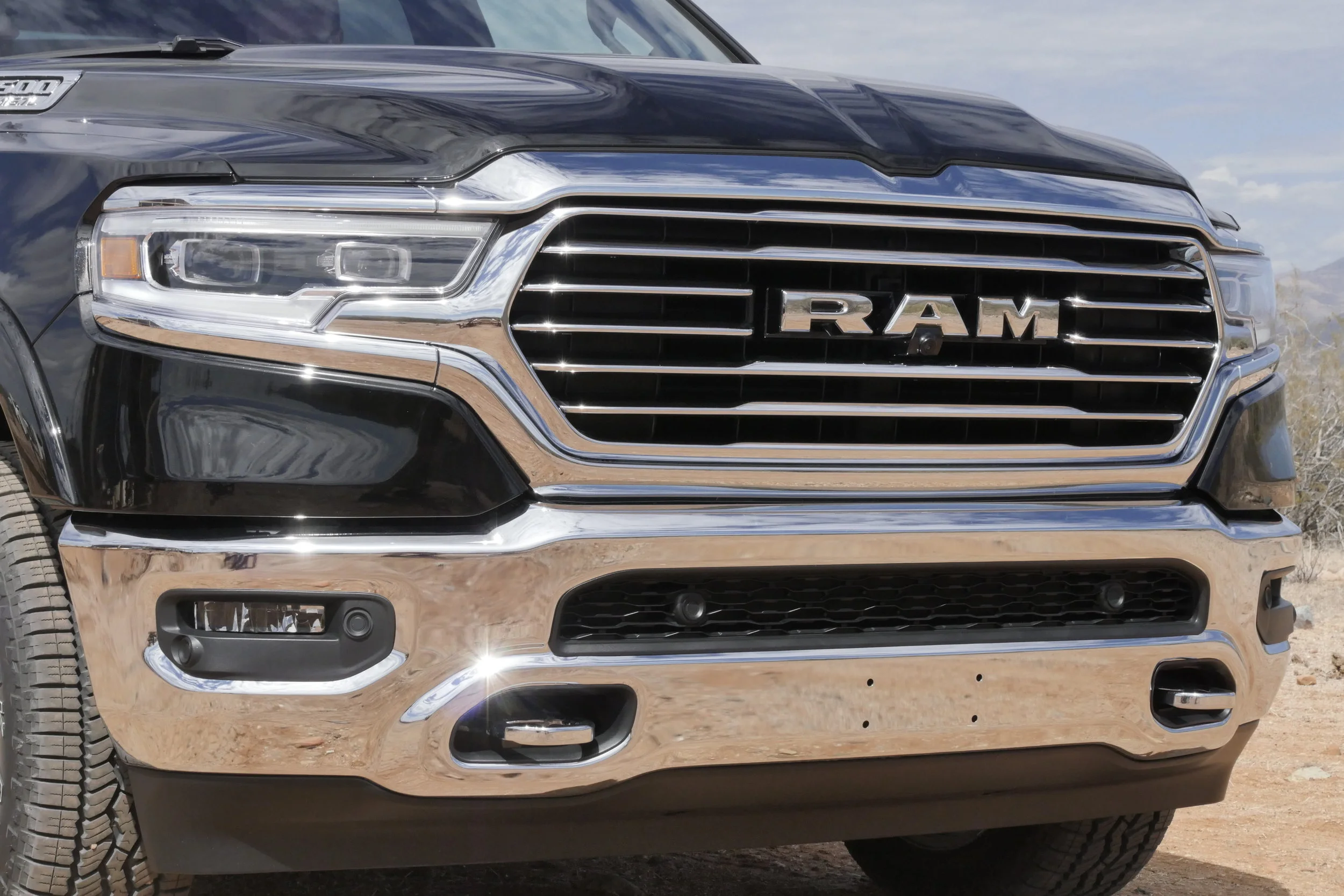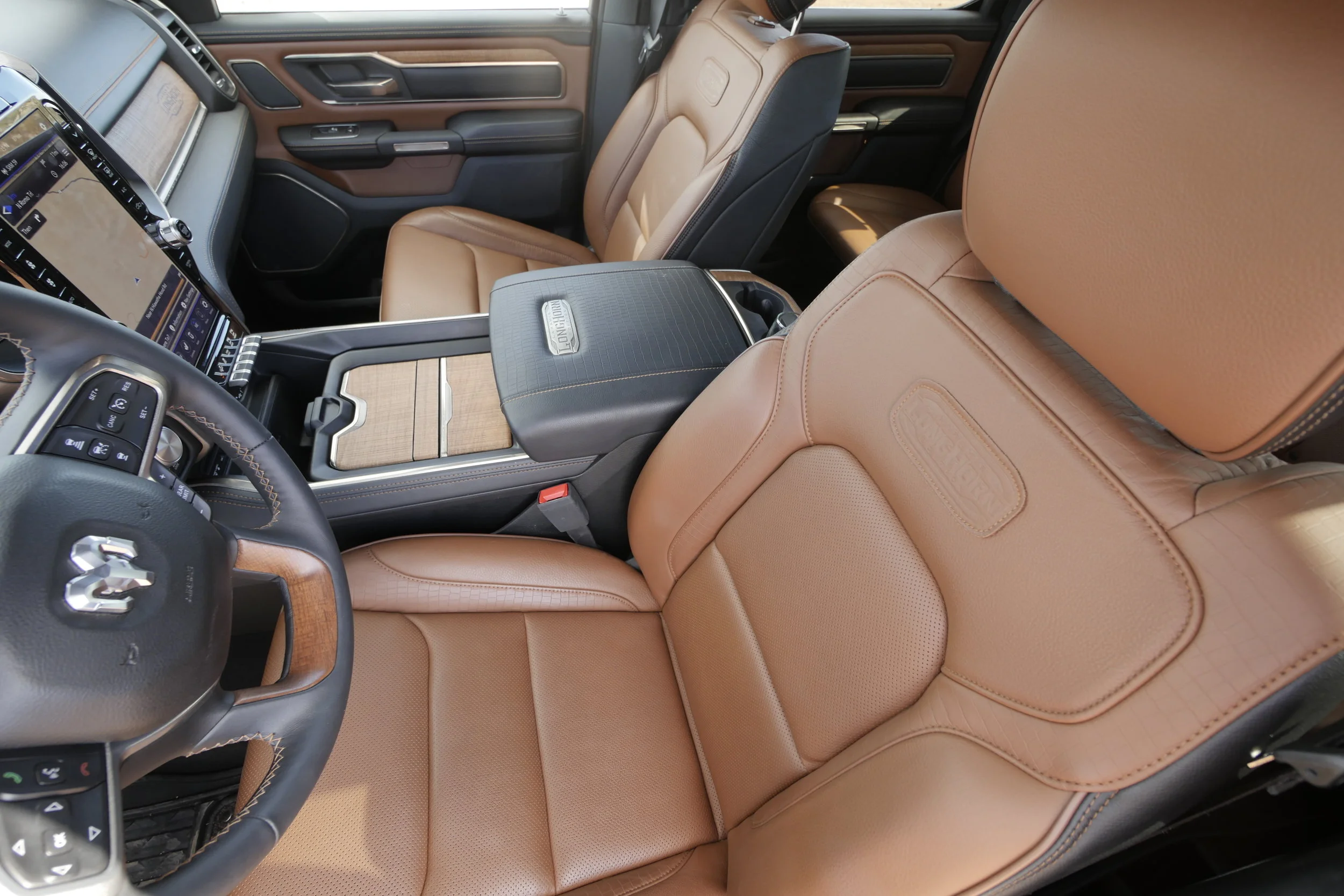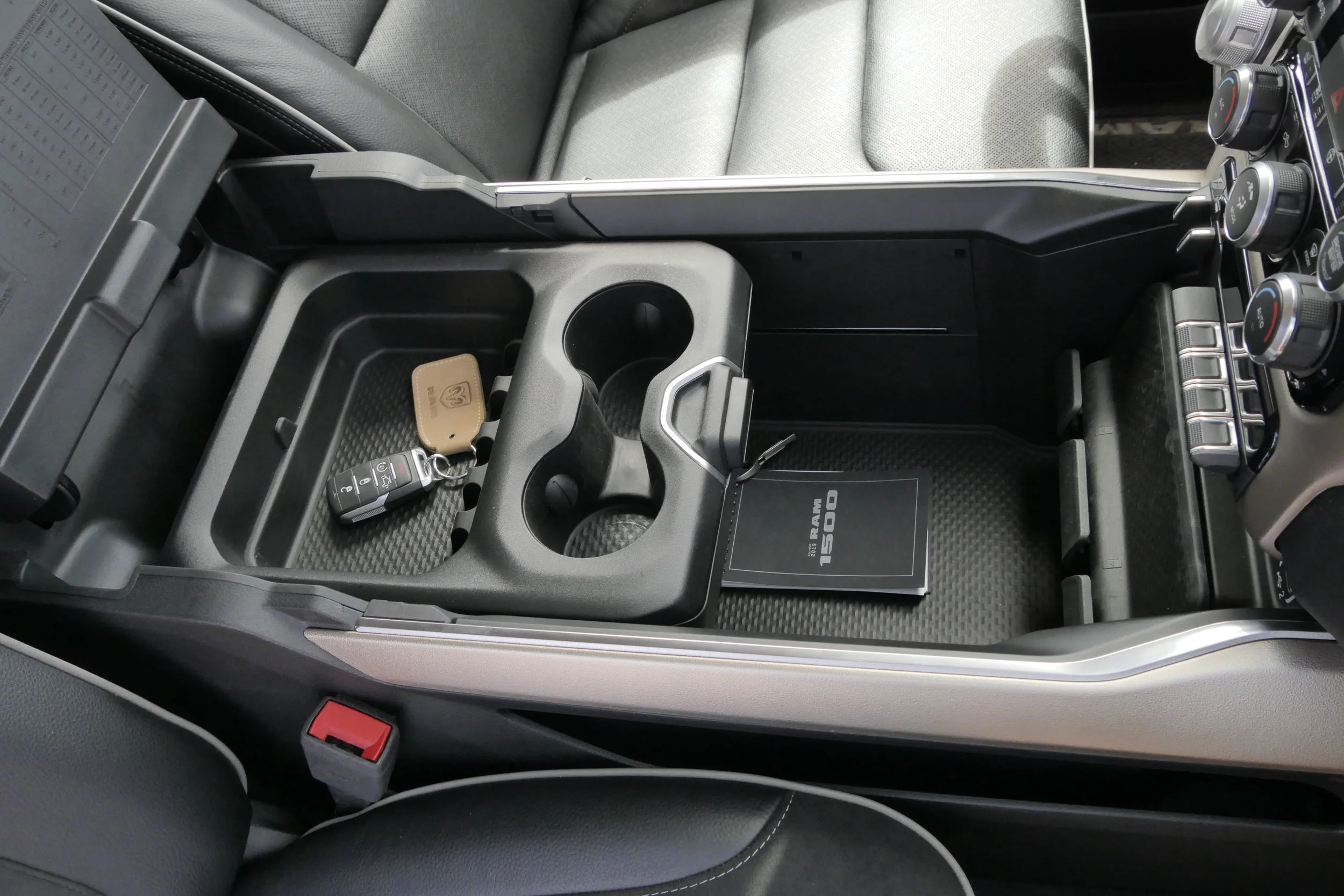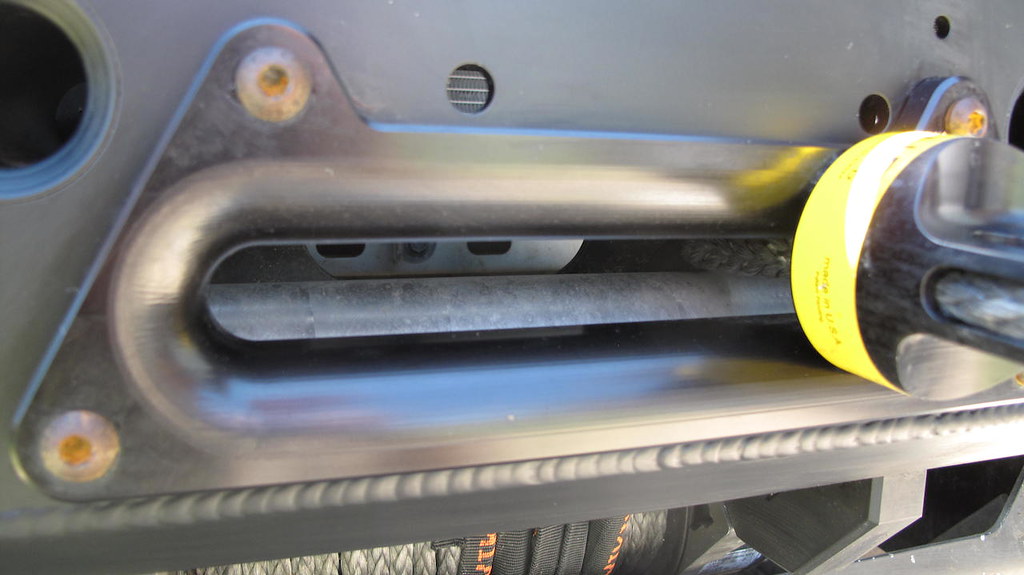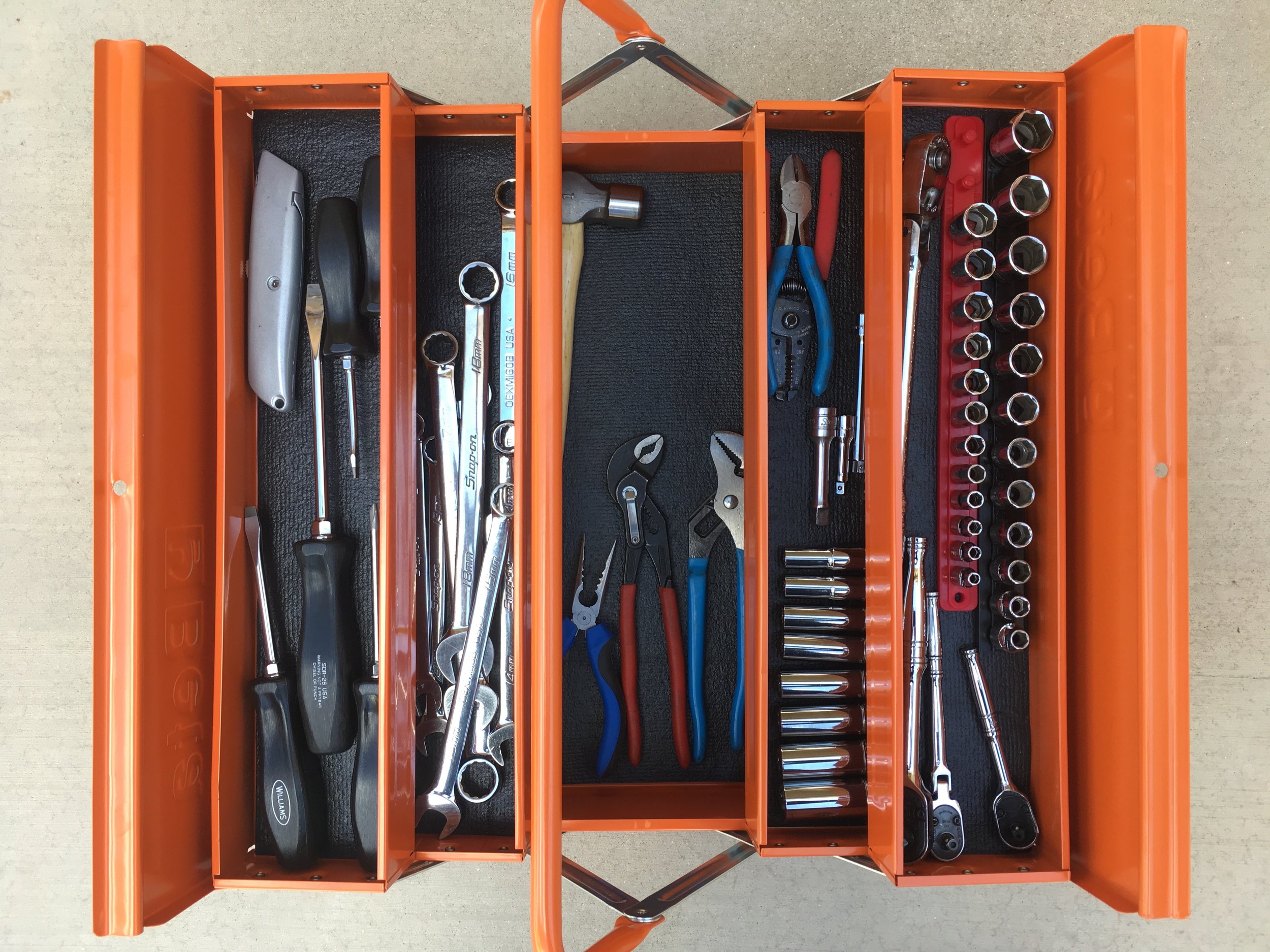On our paved drive the Limited exhibited genuine carved-from-marble solidity and a taut ride at least as good as that of the Nissan Titan XD I reviewed some time ago, which at the time I thought exemplary. And by golly the thing is quiet. It handled the short stretch of dirt road to our press lunch spot with barely any increased noise.
After lunch we took turns on an off-pavement loop course in several examples of the Rebel, the trim level I suspect many overlanders will gravitate to. In addition to LT275/70R-18 Goodyear Wrangler tires and Bilstein shocks (with external reservoirs on the rear), the Rebel gets an electronic locking rear diff, hill-descent control, a one-inch suspension lift (if you don’t get the air springs), and several skid plates. You also get an interior that is any color you like as long as it is red and black, with Goodyear Wrangler tread pattern embossed on the seat upholstery. You also cannot get the 12-inch touchscreen with the Rebel (yet, at least), although the smaller eight-incher is just fine unless you’ve been pre-prejudiced by the bigger one.
Interestingly, I was told that an “off-road” package incorporating most of the Rebel options will be available on other trim levels. If this is so, you could conceivably equip your leather-clad, 12-inch-screen Limited or Laramie Longhorn with the good stuff.
The driving course we were set loose on in the Rebel was clearly meant to be driven quickly, a suggestion many in the press pool took to heart, especially since there were several videographers along the way to film our prowess. I thought the format might have been a mistake, since the Rebel is obviously not intended or equipped to compete with Ford’s Raptor in the wannabe desert racer category. Indeed, the example I got, previously flogged by who knows how many hot-footed journos, displayed a worrying banging noise in the left front suspension area when pushed, so I took it easy. I later rode in the same truck and the new driver noticed it as well. (From a quarter view behind, I watched one truck on the course approach a “Slow Down!” sign warning of a sharp, angled pair of ditches where water had flowed into the main wash course. The driver didn’t lift off a bit, and the front suspension slammed to its bump stops and tossed the truck in the air. This is why manufacturers don’t think highly of most automotive journalists.) With that said, the Rebel would clearly be right at home exploring back roads at sane speeds, and capable with the locker and hill-descent control of going anywhere most overland travelers are likely to.
So . . . to that point, several things come to mind. First is wondering whether the optional air suspension has the capacity to compensate for the weight of, say a Four Wheel Camper, while retaining a decent ride when the camper is off. I asked of FCA, but the we-can’t-authorize-that liability/warranty clause kicked in immediately, which I more or less expected. The top-level 2,300-pound payload is technically up to the task of camper transport, but technical capacity does not always translate to practical (safe) capacity. Still, it would be worth the experiment, except if it didn’t work you’d have spent the extra money for nothing. Having to change out the air springs for coils to accept a camper would be at best expensive and at worst impossible. The air system is certainly adequate to handle lesser camping loads, or a rack carrying a rooftop tent, for example, while maintaining proper ride height and safe handling.
For general overland travel, the new Ram—in any of its guises but especially the Limited and Laramie versions—represents a new high water mark in the evolution of comfort in a pickup truck. After all, even for the most adventurous of us, 90 percent of our travel—even while actually on a journey—is usually on pavement. I’d think little of tackling an 800-mile freeway day in the new Ram to get somewhere interesting.
That brings up the subject of fuel economy. Numbers are not yet out for the eTorque engines, but for ultimate economy the answer will still be a diesel, and I did not hear any information about when (or, actually, even if) the new Ram will get one.
My lasting impression from both the Ram and the previous Wrangler launch is that FCA is genuinely throwing a lot of thought and engineering into its redesigned working vehicles. The new Wrangler retained its spot in my opinion as America’s own world-class expedition vehicle. I think the new Ram 1500 can stand confidently alongside America’s Big Two half-ton pickups, and all three are ahead of the import competition.



